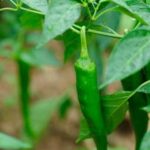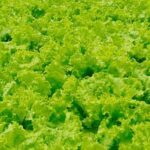North Texas has seen a rising interest in vegetable gardening and cooking, as more people seek to reconnect with nature and embrace a sustainable lifestyle. Engaging in these activities not only provides access to fresh produce but also brings a sense of accomplishment and fulfillment. In this article, we will explore the beauty of North Texas vegetable gardening and cooking, highlighting the numerous benefits and sharing valuable insights for success.
One of the major advantages of vegetable gardening in North Texas is the opportunity to harvest your own fresh produce. From juicy tomatoes to crisp cucumbers, there is nothing quite like picking vegetables straight from your own garden. Not only does this ensure that you have access to nutrient-rich food, but it also allows you to experiment with lesser-known varieties that might not be readily available at grocery stores.
Moreover, by engaging in vegetable gardening and cooking in North Texas, you contribute to sustainable living practices. Growing your own food reduces reliance on industrial agriculture, which often relies on harmful chemicals and extensive transportation networks. By growing locally, we can minimize our carbon footprint while enjoying the freshest produce possible.
In the following sections, we will delve deeper into understanding the North Texas climate for successful gardening, explore essential vegetables suited for this region, provide step-by-step guidance for starting your own garden, discuss seasonal maintenance tips, share harvesting techniques, inspire with delicious recipes using local produce, and encourage community engagement within the North Texas vegetable gardening sphere. It’s time to embrace this beautiful journey of growth and flavor in our very own backyards.
Understanding North Texas Climate
The climate of North Texas plays a crucial role in the success of vegetable gardening. Understanding the unique characteristics of the region’s climate is key to creating a thriving garden. Whether you are a seasoned gardener or just starting out, here is a guide to help you navigate the North Texas climate and achieve successful gardening.
North Texas experiences a hot and humid subtropical climate, with long, hot summers and mild winters. The temperature range can vary greatly throughout the year, with average highs reaching the upper 90s in summer and dipping into the 30s during winter nights. This knowledge serves as a foundation for planning your gardening activities.
When it comes to planting vegetables in North Texas, timing is everything. Some vegetables thrive in cooler weather, while others require the heat of summer to flourish. Here is a list of vegetables along with their recommended planting times:
- Cool-season vegetables: These varieties can be planted in late winter or early spring (February-March) and again in early fall (September-October). Examples include broccoli, carrots, lettuce, spinach, and radishes.
- Warm-season vegetables: These should be planted after the risk of frost has passed and soil temperatures have warmed up (typically mid-March to early April). Tomatoes, peppers, cucumbers, zucchini, okra, and beans are some popular warm-season options.
To successfully navigate extreme weather conditions that North Texas often experiences such as heatwaves or sudden freezes it is important to take certain precautions:
- Provide shade: Install shade cloth or use natural shading techniques like tall plants or trellises to protect tender plants from excessive heat.
- Mulch: Apply organic mulch around plants to retain soil moisture and regulate root temperatures.
- Watering schedule: Adjust your watering schedule based on weather conditions – during periods of drought or extreme heat water more frequently; whereas during cooler periods cut back on watering.
- Frost protection: Cover plants with frost cloth or blankets when the temperature drops below freezing, especially for vulnerable warm-season vegetables.
Understanding the North Texas climate and its implications on vegetable gardening is vital for a successful harvest. By planting at the right time and taking necessary precautions, you can create an environment conducive to healthy plant growth and maximize your gardening efforts.
Essential Vegetables for North Texas Gardens
Tomatoes
Tomatoes are a staple in any North Texas garden and a must-have for both beginners and experienced gardeners. They thrive in the warm climate of North Texas and are relatively easy to grow. When choosing tomato varieties for your garden, opt for heat-tolerant types such as ‘Celebrity’, ‘Solar Fire’, or ‘Heatwave II’. These varieties have been specifically bred to withstand the hot summers of the region.
Bell Peppers
Bell peppers are another excellent choice for North Texas gardens. They love the warmth and full sun, making them perfect for this climate. Ensure you plant them early in the season to allow enough time for fruit development before the extreme heat sets in. Popular bell pepper varieties that perform well in North Texas include ‘Big Bertha’, ‘California Wonder’, and ‘Gypsy’.
Squash
Squash is a versatile vegetable that is well-adapted to North Texas’ hot summers. Both summer squash, such as zucchini and yellow squash, as well as winter squash like butternut and acorn squash, can be grown successfully in this region. Plant squash seeds directly into the ground after the last frost date, usually in late March or early April. To protect against common pests like squash bugs, consider using organic pest control methods such as handpicking.
Green Beans
Green beans are a popular choice among North Texas gardeners due to their ability to tolerate both heat and cold weather conditions. Plant bush beans during the spring months when soil temperatures reach around 65°F (18°C). Varieties such as ‘Provider’, ‘Contender’, and ‘Blue Lake’ perform exceptionally well in this region.
Carrots
Carrots can be grown successfully in North Texas with a little extra care. They prefer sandy soil, so amending the soil with compost or sand can improve their growth. Start sowing carrot seeds in early spring, around February or March, and continue planting in succession every two weeks until late June for a continuous harvest. Varieties like ‘Danvers 126’, ‘Nantes’, and ‘Scarlet Nantes’ are well-suited for North Texas gardens.
Herbs
Growing herbs in a North Texas garden adds fresh flavors to your dishes all year round. Popular herbs that thrive in this region include basil, mint, rosemary, thyme, oregano, and parsley. Keep in mind that some herbs may require well-draining soil and regular watering to ensure healthy growth.
By incorporating these essential vegetables into your North Texas garden, you’ll be on your way to enjoying a bountiful harvest throughout the growing season. Remember to follow proper care instructions for each vegetable and adjust your planting schedule accordingly based on the unique climate of the region. With a little bit of effort and patience, you’ll soon be reaping the rewards of your own homegrown produce.
Starting Your North Texas Vegetable Garden
Site Selection
When starting your North Texas vegetable garden, one of the first steps is selecting the right site. Look for a location that receives at least six hours of direct sunlight each day, as most vegetables require ample sunlight to thrive. Additionally, choose an area with well-draining soil to prevent waterlogged roots and potential rot. If your soil is heavy clay or sandy, consider amending it with organic matter such as compost to improve its texture and fertility.
Soil Preparation
Prepping the soil is essential for a successful vegetable garden. Begin by clearing the area of any debris or weeds. Then, loosen the soil using a garden fork or tiller to a depth of around 8-12 inches. This allows for better root penetration and nutrient absorption.
Next, conduct a soil test to determine its pH level and nutrient composition. Most vegetables prefer slightly acidic soil with a pH between 6.0-7.0. Adjust the pH accordingly by adding lime to raise it or sulfur to lower it.
Composting
Compost is nature’s fertilizer and can greatly improve the health and productivity of your North Texas vegetable garden. Start by creating a compost pile or bin using a mixture of nitrogen-rich “green” materials (e.g., fruit scraps, grass clippings) and carbon-rich “brown” materials (e.g., leaves, straw).
Turn the compost regularly to promote decomposition and ensure proper airflow. Once thoroughly decomposed (usually within 2-6 months), incorporate the compost into the top few inches of your garden bed before planting.
Tool Selection
Having the right tools can make gardening in North Texas easier and more efficient. Some essential tools for starting your vegetable garden include a shovel or spade for digging holes, a rake for leveling soil and removing debris, a hand trowel for transplanting seedlings, a hose or watering can for watering plants, and a hoe for weeding.
Additionally, consider investing in a soil moisture meter to help gauge when your plants need watering and a pair of pruning shears for maintaining plant health.
Remember that starting a North Texas vegetable garden requires patience and ongoing care. By following these step-by-step guidelines, you’ll set yourself up for a rewarding and fruitful gardening experience.
Cultivating a Bountiful North Texas Vegetable Garden
Maintaining a successful vegetable garden in North Texas requires careful attention and ongoing care throughout the year. This section will provide valuable insights into seasonal maintenance tasks to help you cultivate a bountiful and productive garden.
Planting: The key to a thriving North Texas vegetable garden is to plant at the right time. In early spring, start with cool-season crops like lettuce, carrots, and broccoli. As temperatures rise in late spring and early summer, transition to warm-season vegetables such as tomatoes, peppers, and squash. Fall is an ideal time for planting cool-season crops again to enjoy a second harvest before winter.
Watering: Proper watering is crucial for the health of your plants. During hot summer months, it is recommended to water deeply and less frequently to encourage deep root growth. Aim for around 1 inch of water per week, either through rainfall or irrigation. Monitor soil moisture levels regularly and adjust watering accordingly.
Fertilizing: Regular fertilization ensures that your plants receive the necessary nutrients for optimal growth. Before planting, incorporate organic matter such as compost into the soil to improve nutrient availability. Additionally, apply balanced organic fertilizers every four to six weeks during the growing season. Be mindful of over-fertilization, as it can lead to excessive foliage growth at the expense of fruit production.
It is important to address common garden pests and diseases in North Texas organically. Some pest management techniques include using row covers or netting to protect plants from insects and handpicking larger pests like caterpillars or slugs. When it comes to diseases such as powdery mildew or fungal infections, practicing proper sanitation by removing affected plants parts can help prevent their spread.
To optimize yields and maintain soil health in your garden, consider implementing mulching techniques like using organic materials such as straw or wood chips to suppress weeds and retain moisture. Furthermore, practice crop rotation by changing the location of your vegetable beds each year. Crop rotation helps prevent the buildup of pests and diseases in the soil.
| Maintenance Task | Recommendations |
|---|---|
| Planting | – Start with cool-season crops in early spring
|
| Watering | – Water deeply and less frequently during hot summer months
|
| Fertilizing | – Incorporate organic matter before planting
|
| Pest Management | – Use row covers or netting for insect protection
|
| Mulching and Crop Rotation | – Implement organic mulching techniques
|
Harvesting the Fruits of Your Labor
Once you have diligently tended to your North Texas vegetable garden, the time will come to reap what you have sown. Knowing when and how to harvest your crops is crucial for maximizing their flavor, quality, and longevity. In this section, we will discuss the timing and techniques for harvesting a variety of vegetables in North Texas.
Timing is essential when it comes to harvesting vegetables in North Texas. Each plant has different signs that indicate readiness for harvesting. For example, tomatoes are typically ready when they reach full color and firmness but are still slightly soft when gently squeezed.
Bell peppers should be picked when they have obtained their desired size and color but before they start to wrinkle or develop a pungent smell. Leafy greens like lettuce should be harvested when young and tender, before they become bitter or bolt.
To ensure that you harvest your vegetables properly, it’s important to use the correct techniques. Many vegetables can be gently twisted or snapped off the plant by hand at the stem base or cut with clean gardening shears. Be careful not to damage surrounding plants or neighboring fruits during the process. Some crops, such as root vegetables like carrots or beets, require digging carefully around them with a garden fork or spade.
Preserving excess produce is a great way to extend the enjoyment of your harvest beyond its peak season. Canning, freezing, and pickling are all effective methods for preserving vegetables in North Texas. Canning involves heat processing foods in jars with either water bath canning or pressure canning methods.
Freezing requires blanching vegetables quickly in boiling water before submerging them in ice water and storing them in freezer-safe containers or bags. Pickling can range from simple quick pickles made within a few hours to fermented pickles requiring longer periods of curing.
Harvesting your own vegetables from your North Texas garden allows you to experience the satisfaction of growing your own food and enjoying it at its peak freshness. By observing the signs of readiness, using proper harvesting techniques, and preserving excess produce, you can fully embrace the rewards of your labor and enjoy the flavors of your homegrown vegetables throughout the year.
Inspiring North Texas Vegetable Recipes
Vegetable gardening in North Texas not only provides an abundance of fresh produce, but it also opens up a world of culinary creativity in the kitchen. From appetizers to desserts, there are countless recipes that showcase the flavors and textures of locally grown vegetables. Whether you’re a seasoned chef or just starting to explore the joys of cooking, here are some inspiring North Texas vegetable recipes that will take your garden-to-table experience to the next level.
Appetizers:
- Roasted Beet Hummus: This vibrant and creamy dip combines roasted beets with chickpeas, tahini, garlic, and lemon juice. Serve it with pita chips or fresh vegetables for a colorful and nutritious appetizer.
- Grilled Zucchini Roll-Ups: Thinly sliced zucchini is grilled to perfection and wrapped around a savory filling of herbed cheese or roasted red peppers. These roll-ups can be enjoyed as finger food or served on a platter as an elegant starter.
Salads:
- Summer Tomato Salad: Take advantage of ripe tomatoes during the summer months with this simple yet flavorful salad. Toss together sliced tomatoes, fresh basil, mozzarella cheese, and a drizzle of balsamic glaze for a refreshing side dish.
- Rainbow Chard Salad: With its vibrant colors and slightly earthy flavor, rainbow chard makes for an eye-catching salad base. Top it with diced avocado, roasted nuts, and a tangy vinaigrette for a nutritious and satisfying meal.
Main Courses:
- Butternut Squash Risotto: Creamy arborio rice cooked in vegetable broth is elevated with the addition of sweet roasted butternut squash. This comforting dish is perfect for cozy evenings at home.
- Stuffed Bell Peppers: Hollowed-out bell peppers are filled with a mixture of quinoa, black beans, corn, and spices before being baked to perfection. Serve these hearty stuffed peppers alongside a fresh salad for a complete meal.
Desserts:
- Zucchini Bread: Grated zucchini adds moisture and a subtle sweetness to this classic baked treat. Enjoy it as a breakfast loaf or as a dessert, with a sprinkle of powdered sugar on top.
- Blackberry Basil Crisp: Combine fresh blackberries with chopped basil leaves, oats, and buttery crumble topping for a delightful summer dessert. Serve it warm with a scoop of vanilla ice cream for the perfect finishing touch.
These recipes are just the tip of the iceberg when it comes to utilizing North Texas vegetables in your cooking. Experiment with different combinations and flavors to create dishes that truly showcase the bounties of your garden. Bon appétit.
Engaging with the North Texas Vegetable Gardening Community
Engaging with the North Texas vegetable gardening community can greatly enrich your gardening experience and provide a platform for learning, sharing, and connecting with like-minded individuals. By connecting with local gardening clubs, farmers’ markets, or community gardens, you can tap into a wealth of knowledge and resources that will help you enhance your skills as a gardener.
One way to engage with the North Texas vegetable gardening community is to join a local gardening club. These clubs often hold regular meetings, workshops, and events where you can learn from experienced gardeners and experts in the field.
You can exchange tips and tricks, swap seeds or plants, and even participate in group gardening projects. Being part of a gardening club allows you to connect with others who share your passion for vegetable gardening while expanding your network of gardening enthusiasts.
Another avenue for engagement is through farmers’ markets. These markets not only provide an opportunity to purchase fresh produce but also offer a platform for building relationships with local growers and fellow gardeners.
Take some time to chat with farmers and vendors at the market, ask them about their cultivation techniques or their favorite crops to grow in the area. Farmers’ markets often organize workshops or cooking demonstrations which are perfect opportunities to learn new recipes using the abundant seasonal vegetables available.
Community gardens are another fantastic way to connect within the North Texas vegetable gardening community. These shared spaces allow individuals or families without access to land suitable for gardening to grow their own food alongside other gardeners.
Participating in a community garden not only provides access to communal resources such as tools and compost but also fosters a sense of camaraderie among members through shared workdays and harvest celebrations. It’s an excellent opportunity to learn from experienced gardeners while contributing positively to your local community.
Conclusion
In conclusion, embarking on the journey of North Texas vegetable gardening and cooking is a rewarding and fulfilling endeavor. Throughout this article, we have explored the unique climate of North Texas and learned about the best vegetables to grow in the region. We have also provided helpful tips and techniques for starting and maintaining a successful vegetable garden.
By engaging in vegetable gardening, individuals can enjoy the many benefits that come with growing their own food. Fresh, locally grown produce not only tastes better but also promotes sustainable living by reducing reliance on store-bought vegetables that may have been transported long distances. Plus, there is immense satisfaction in knowing exactly where your food comes from and having control over its cultivation process.
Additionally, cooking with seasonal, locally sourced ingredients enhances the flavors of dishes and supports local farmers and producers. Incorporating North Texas vegetables into your recipes can bring out vibrant flavors and textures, elevating your culinary experience to new heights.
We encourage you to embrace the journey of North Texas vegetable gardening and cooking. Start small with a few plants or herbs if you are new to gardening, and gradually expand your garden as you gain confidence and experience. Join local gardening clubs or connect with fellow gardeners online to learn from their expertise and share your own experiences.
Remember, gardening is not just a hobby – it is a way of life that brings joy, satisfaction, and overall well-being. So go ahead, roll up your sleeves, get your hands dirty in the rich soil of North Texas, and savor the beauty of growing your own food while creating delicious dishes for yourself and your loved ones.
Frequently Asked Questions
When should I start a vegetable garden in Texas?
In Texas, the ideal time to start a vegetable garden depends on the region you are located in. As a general rule, starting a vegetable garden in Texas is best done in early spring or fall, when temperatures are moderate and more favorable for plant growth. However, it’s important to consider the specific climate and weather patterns of your region within Texas.
Some areas, like South Texas, have milder winters and can allow for year-round gardening. On the other hand, colder regions such as the Panhandle may require starting a vegetable garden later in spring to avoid potential frosts.
What’s the easiest vegetable to grow in Texas?
When it comes to finding an easy vegetable to grow in Texas, there are several options that thrive well in this state’s climate. One popular choice is okra, which is known for its heat tolerance and ability to withstand hot summers.
Other easy-to-grow vegetables include black-eyed peas, jalapenos peppers, tomatoes (specific varieties like Roma or Cherry tomatoes), and various herbs such as basil or oregano. These vegetables generally adapt well to Texas conditions and require minimal care once established.
Can you grow vegetables in North Texas?
Absolutely! While North Texas experiences some unique challenges due to its slightly cooler winters compared to other parts of the state, growing vegetables in this region is certainly possible with proper planning and consideration.
It’s crucial to select vegetable varieties that are suited for cooler climates and can handle occasional freezes or frost events that may occur during winter months. By focusing on cool-weather vegetables such as carrots, lettuce, broccoli, cauliflower, kale, or Swiss chard during these times of year and transitioning to warm-season crops like tomatoes and peppers once temperatures rise consistently above freezing levels, you can enjoy a bountiful harvest throughout the growing season even in North Texas’ climatic conditions.

If you’re looking to get into vegetable gardening, or are just looking for some tips on how to make your current garden better, then you’ve come to the right place! My name is Ethel and I have been gardening for years. In this blog, I’m going to share with you some of my best tips on how to create a successful vegetable garden.





